Can Cats Eat Ramen Noodles?
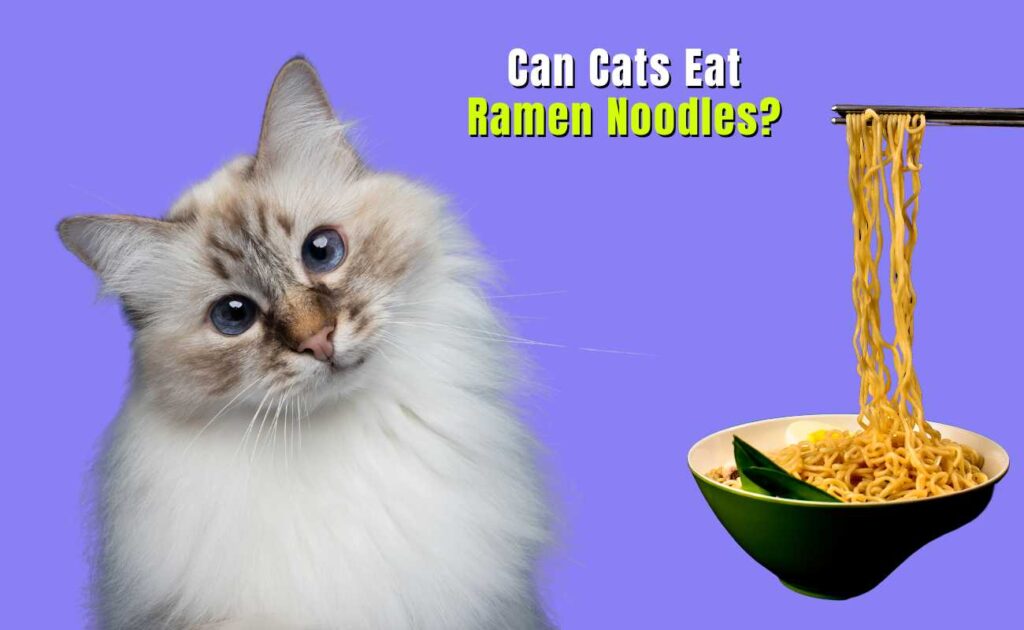
Ramen noodles, a popular dish among people for their convenience and flavor, have become a staple in many households. As cat owners, it’s common to wonder if the food we enjoy can be safely shared with our feline friends. Among the myriad questions that come up, one is: Can cats eat ramen noodles? This article dives deep into the nutritional content of ramen noodles, the potential health risks for cats, and what alternatives are better suited for your furry companion. What Are Ramen Noodles Made Of? Ramen noodles are a type of instant noodle made from wheat flour, water, salt, and an alkaline mineral called kansui. The seasoning packets often contain a mix of salt, monosodium glutamate (MSG), various spices, and sometimes dehydrated vegetables or meats. While ramen noodles themselves are simple in composition, the seasoning packets add a layer of complexity with various additives and preservatives. Understanding these ingredients is key to determining whether they’re safe for your cat. Wheat Flour and Cats Wheat flour is a primary ingredient in ramen noodles. While it is not toxic to cats, it offers little to no nutritional value. Cats are obligate carnivores, meaning their diet must primarily consist of meat to thrive. Unlike humans, who can digest a wide range of foods, cats lack certain enzymes required to break down carbohydrates efficiently. As a result, foods high in carbs like ramen noodles can lead to digestive issues and weight gain in cats if consumed regularly. Salt Content in Ramen Noodles One of the biggest concerns with ramen noodles is their high salt content. Cats have a very low tolerance for salt compared to humans. Even small amounts of salt can lead to hypernatremia (salt poisoning) in cats, causing symptoms such as vomiting, diarrhea, decreased appetite, lethargy, incoordination, and in severe cases, seizures or death. The seasoning packets that come with ramen noodles are particularly high in salt, making them dangerous for cats to consume. Monosodium Glutamate (MSG) and Other Additives MSG is commonly used in ramen seasoning packets to enhance flavor. While not explicitly toxic to cats, MSG has been associated with certain health risks, including potential neurotoxicity and allergic reactions. Other additives and preservatives found in the seasoning, such as garlic powder or onion powder, can be highly toxic to cats, leading to conditions like hemolytic anemia. What Should You Do If Your Cat Eats Ramen Noodles? If your cat accidentally eats a small amount of plain ramen noodles (without the seasoning), there’s likely no need for immediate concern. However, you should monitor your cat for any signs of discomfort or digestive issues. If your cat consumes noodles with seasoning or shows any signs of salt poisoning or allergic reaction, contact your veterinarian immediately. Monitor for Symptoms Keep an eye on your cat for symptoms like vomiting, diarrhea, lethargy, or loss of appetite. These could indicate that your cat is having difficulty digesting the noodles or reacting to the salt and additives. Provide Fresh Water Ensure your cat has access to plenty of fresh water, especially if they have consumed ramen noodles with seasoning. This can help flush out excess sodium from their system and prevent dehydration. Consult Your Veterinarian If your cat shows any severe symptoms or if you’re unsure of how much they ate, it’s best to consult your veterinarian. They can provide guidance on what steps to take next and whether your cat needs any specific treatment. Conclusion While it might be tempting to share a bowl of ramen with your curious cat, it’s best to keep this dish to yourself. The high salt content, additives, and lack of nutritional value make ramen noodles unsuitable for feline consumption. Instead, focus on providing your cat with a balanced diet tailored to their specific needs as obligate carnivores. Always consult your veterinarian when introducing new foods to your cat’s diet to ensure they remain happy and healthy. Remember, the best way to show your love for your cat is by providing them with the proper nutrition they need to thrive. Keep the ramen noodles for yourself and treat your cat to something more suitable for their dietary needs.
Can Cats Eat Black Olives? Essential Safety Tips and Nutritional Insights
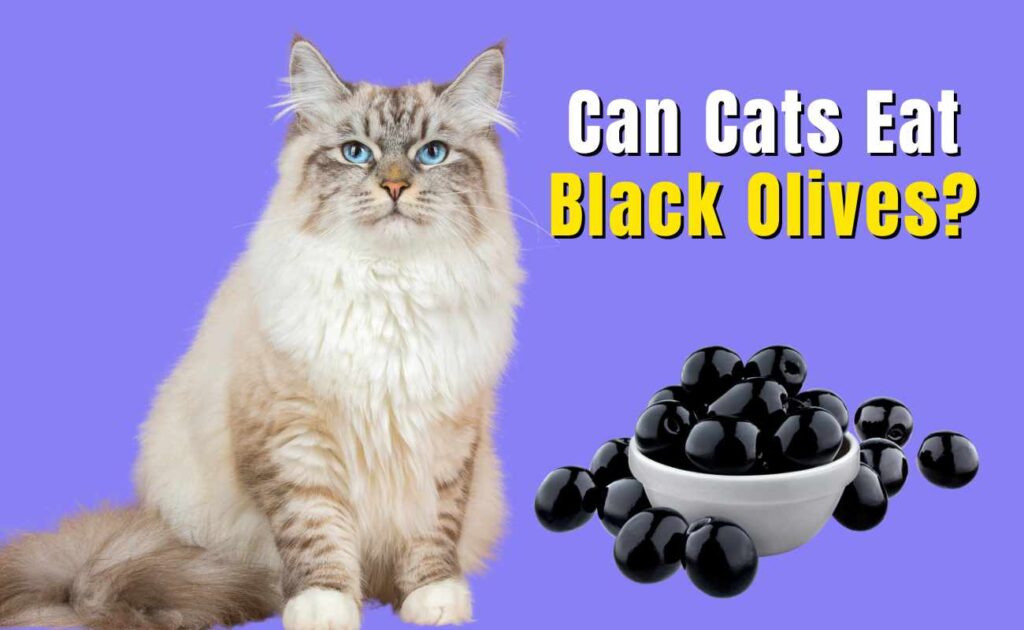
As cat owners, we often wonder if we can share our favorite snacks with our furry friends. One common question is whether black olives are safe for cats. After all, olives are a staple in many human diets, but are they a good choice for your pet? In this article, we will explore whether black olives are safe for cats, their nutritional value, potential risks, and what alternatives might be better for your feline companion. Are Black Olives Safe for Cats? Black olives are not considered toxic to cats. This means that if your cat sneaks a bite of a black olive, it’s unlikely to cause serious harm. However, just because something isn’t toxic doesn’t mean it’s the best choice for your pet. While a small amount of black olive is not likely to be dangerous, it is important to understand that these foods are not specially designed for cats and can cause some issues. In general, it’s a good idea to be cautious about what you feed your cat. Cats have very different nutritional needs compared to humans. Their digestive systems are not designed to process many of the foods we eat, including olives. Therefore, while black olives are not poisonous, they should only be offered in small amounts, if at all. Nutritional Value of Black Olives Black olives are rich in a variety of nutrients. They contain healthy fats, fiber, vitamins, and minerals. These nutrients can be beneficial for humans, but they don’t provide much value to cats. Healthy Fats: Olives contain healthy fats that can be good for human hearts. For cats, however, these fats can be hard to digest and may lead to gastrointestinal issues. Fiber: The fiber in olives is good for human digestion, but cats don’t need much fiber in their diet. Their bodies are designed to get their nutrients from meat, not plants. Vitamins and Minerals: While olives contain vitamins and minerals like vitamin E and iron, cats get their vitamins and minerals from their specially formulated cat food. Overall, the nutritional value of black olives doesn’t translate into significant benefits for cats. Their bodies are designed to thrive on meat-based diets, and they don’t need the extra nutrients from olives. Here’s a simple table outlining the nutritional value of black olives, specifically focusing on their key components: Nutrient Amount per 100g Description Calories 115 kcal Provides energy, but not a significant source of calories for cats. Fat 10.7 g Includes healthy fats, but cats have different fat requirements. Saturated Fat 1.4 g Small amount of saturated fat; too much can be unhealthy for cats. Fiber 3.2 g Cats don’t need much fiber; excess can lead to digestive issues. Sodium 735 mg High sodium content can be harmful to cats, causing potential health issues. Vitamin E 1.8 mg Beneficial for humans, but cats get their vitamins from specially formulated food. Iron 3.3 mg Iron is important, but cats typically get enough from their diet. This table provides a quick overview of what’s in black olives and how it might affect cats. How to Safely Offer Black Olives to Your Cat If you decide to let your cat try black olives, there are a few important things to consider: Remove the Pit: Always make sure the olive is pit-free. Even without the pit, olives can be a choking hazard. Cut into Small Pieces: Chop the olive into small, manageable pieces to reduce the risk of choking and to make it easier for your cat to digest. Offer in Moderation: Even if you prepare the olive correctly, only offer it in very small amounts. A small piece as an occasional treat is enough. Remember that cats should primarily eat their regular cat food, which is balanced to meet their nutritional needs. Conclusion In conclusion, while black olives are not toxic to cats, they are not an ideal treat for your furry friend. The potential risks, including high sodium content and the risk of gastrointestinal upset, outweigh any benefits that olives might offer. It’s always best to stick with foods that are specifically designed for cats or other treats that are safe and nutritious for them. If you’re ever unsure about introducing new foods to your cat’s diet, consult with your veterinarian. They can provide personalized advice based on your cat’s health and dietary needs. Keeping your cat’s diet balanced and appropriate for their species is the best way to ensure they remain healthy and happy.
Can Dogs Eat Ramen Noodles? Understanding the Risks and Safe Alternatives
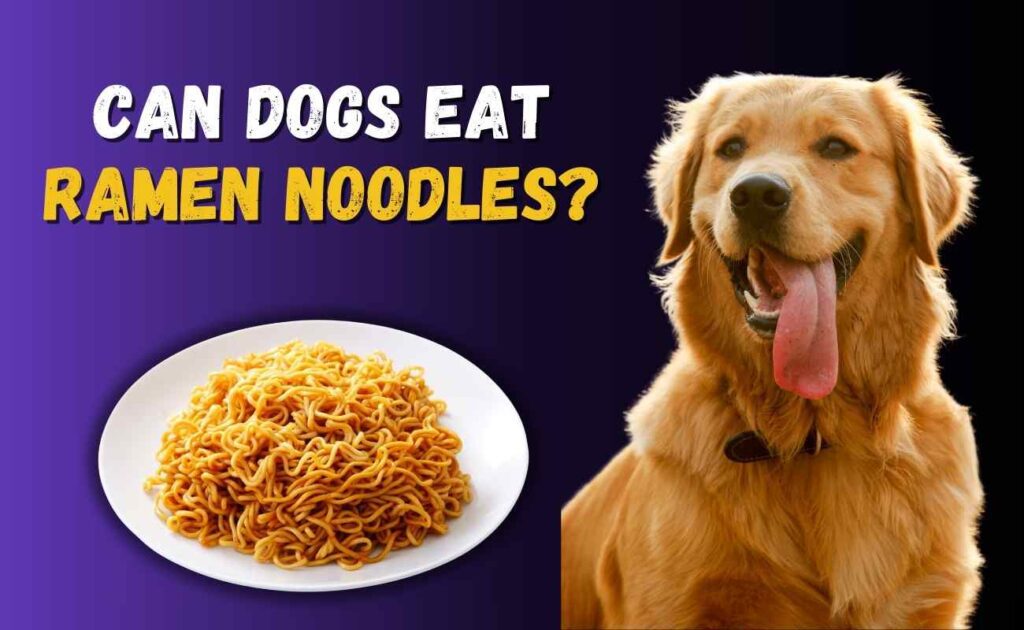
Ramen noodles have become a popular staple in many households, cherished for their convenience, flavor, and versatility. With such widespread popularity among humans, it’s not surprising that dog owners may wonder if their furry friends can enjoy this tasty treat as well. Sharing human food with dogs is a common practice, but it’s important to understand which foods are safe and which can pose risks to our pets. This article will explore whether dogs can eat ramen noodles, the potential dangers involved, and healthier alternatives that can satisfy your dog’s cravings. What Are Ramen Noodles? Ramen noodles, originally from Japan, are a type of wheat noodle that comes in various forms, including instant and fresh varieties. Instant ramen is perhaps the most popular version, known for its quick preparation and flavorful seasoning packets. These noodles are typically pre-cooked, dried, and often contain a variety of seasonings and preservatives to enhance flavor and extend shelf life. Fresh ramen noodles, on the other hand, are usually found in restaurants or specialty stores. They are made from wheat flour, water, salt, and sometimes eggs. Unlike instant ramen, fresh noodles are not pre-cooked or heavily seasoned, allowing for a more customized culinary experience. Can Dogs Eat Ramen Noodles? While it might be tempting to share your bowl of ramen with your dog, it’s important to consider whether this food is safe for them. Generally speaking, ramen noodles are not recommended for dogs. While plain, cooked noodles might not be inherently toxic, the overall composition of ramen noodles, especially the instant variety, poses several risks for your pet. The primary concerns with feeding ramen noodles to dogs are related to the ingredients often found in these products, such as high levels of sodium, artificial flavors, and preservatives. Additionally, the seasonings that accompany instant ramen can contain ingredients that are harmful to dogs, including garlic and onion powder. Ingredients in Ramen Noodles That Are Harmful to Dogs High Sodium Content: One of the biggest risks associated with ramen noodles, particularly the instant kind, is the high sodium content. Dogs do not require nearly as much salt in their diet as humans do, and excessive sodium can lead to dehydration, increased blood pressure, and in severe cases, sodium ion poisoning. Symptoms of sodium ion poisoning include vomiting, diarrhea, tremors, and even seizures. Flavors and Seasonings: Many ramen noodles come with seasoning packets that contain spices like garlic and onion powder, both of which are toxic to dogs. Garlic and onions can cause gastrointestinal irritation and damage red blood cells, leading to conditions such as hemolytic anemia. Even in small amounts, these ingredients can be harmful over time, especially if consumed regularly. Preservatives and Additives: Instant ramen noodles are often loaded with preservatives and artificial additives designed to prolong shelf life and enhance flavor. These chemicals can be difficult for dogs to digest and may lead to various health issues, including digestive upset, allergic reactions, and potential long-term health problems. What to Do If Your Dog Eats Ramen Noodles If your dog accidentally consumes ramen noodles, it’s essential to monitor them for any signs of discomfort or adverse reactions. Depending on the quantity and type of ramen ingested, here are some steps to take: Assess the Situation: Determine how much ramen your dog ate and whether it included any harmful seasonings or additives. If it was a small amount of plain noodles, your dog might only experience mild digestive upset. Watch for Symptoms: Keep an eye out for symptoms such as vomiting, diarrhea, lethargy, excessive thirst, or any signs of allergic reactions like swelling or difficulty breathing. These could indicate a more severe reaction to the ingredients. Contact Your Veterinarian: If your dog shows any concerning symptoms or if you know they consumed a large amount of ramen, it’s best to consult your veterinarian. They can provide guidance on whether any immediate treatment is necessary. Conclusion While ramen noodles are a delicious and convenient food for humans, they are not suitable for dogs. The high sodium content, harmful seasonings, and potential additives make ramen a risky choice for our canine companions. Instead, opt for safer alternatives like plain cooked noodles, vegetable noodles, or specially-made dog-friendly treats. By making informed choices about your dog’s diet, you can ensure their health and happiness for years to come.
Can Dogs Eat Wild Rice? Everything You Need to Know
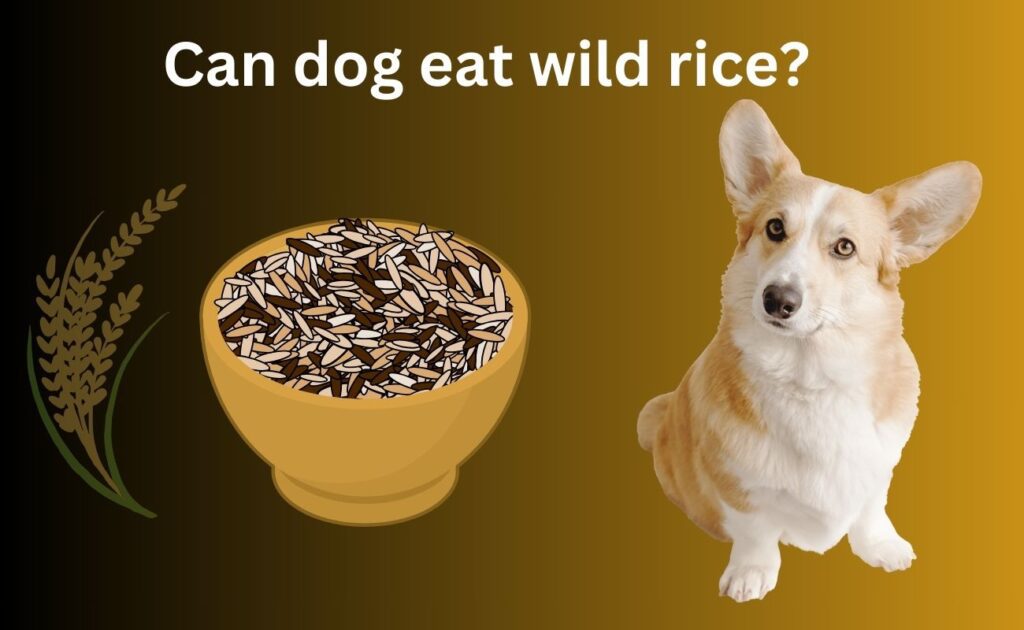
We all want the best for our dogs, and that starts with what we feed them. A balanced diet is key to keeping our furry friends healthy and happy. But with so many options out there, it can be confusing to know what’s safe to feed your dog. One common question dog owners have is whether dogs can eat certain human foods, like wild rice. This blog will address this question and provide you with all the information you need to know about feeding wild rice to your dog. What is Wild Rice? Wild rice might sound like a type of rice, but it’s actually not. Unlike white or brown rice, which comes from a plant called Oryza sativa, wild rice comes from a different kind of plant. Wild rice is actually a type of aquatic grass seed. The plants that produce wild rice grow in water, mainly in lakes and rivers, and are native to North America. The seeds of this grass are what we call wild rice. It has a nutty flavor and is often considered a healthy option for people. Nutritional Chart for Wild Rice: Here’s a nutritional chart for wild rice based on a 1-cup serving (about 164 grams) of cooked wild rice: Nutrient Amount per 1 Cup (164g) % Daily Value Calories 166 kcal – Total Fat 0.6 g 1% Saturated Fat 0.1 g 1% Cholesterol 0 mg 0% Sodium 5 mg 0% Total Carbohydrates 35 g 12% Dietary Fiber 3 g 12% Sugars 1 g – Protein 6.5 g – Vitamin A 0 IU 0% Vitamin C 0 mg 0% Calcium 3 mg 0% Iron 1 mg 5% Magnesium 52 mg 13% Zinc 1 mg 9% Phosphorus 134 mg 13% Potassium 166 mg 5% Folate (B9) 26 mcg 6% Thiamin (B1) 0.1 mg 7% Niacin (B3) 2 mg 8% Manganese 1 mg 55% Note: The % Daily Value (%DV) is based on a 2,000-calorie daily diet and is intended for general nutritional advice. Wild rice is rich in fiber, low in fat, and a good source of important minerals like magnesium, phosphorus, and manganese. Is Wild Rice Safe for Dogs? Safety Considerations: The good news is that wild rice is safe for dogs to eat. It is not toxic and doesn’t contain anything that is harmful to dogs. In fact, many dog food brands include rice or wild rice in their recipes because it’s a good source of energy and nutrients. However, like with any new food, it’s important to introduce wild rice to your dog’s diet gradually and in moderation. Allergies and Sensitivities: While wild rice is generally safe, some dogs might have allergies or sensitivities to certain grains. Although wild rice is less likely to cause an allergic reaction compared to wheat or corn, it’s still possible. If your dog has never had wild rice before, start by giving them a small amount and watch for any signs of an allergic reaction. Symptoms can include itching, redness, digestive upset, or breathing difficulties. If you notice any of these signs, stop feeding wild rice to your dog and consult your veterinarian. Health Benefits of Wild Rice for Dogs When comparing wild rice to regular rice, such as white or brown rice, wild rice comes out on top in terms of nutritional value. White rice is often stripped of many nutrients during processing, leaving mainly carbohydrates. While brown rice is a better option than white rice, wild rice still has more fiber and a wider range of vitamins and minerals. If you’re looking to add a grain to your dog’s diet, wild rice is a more nutritious choice. How to Feed Wild Rice to Dogs Preparation Tips: If you decide to feed wild rice to your dog, it’s important to prepare it properly. Always cook wild rice before giving it to your dog. Uncooked wild rice is hard to digest and can cause stomach upset. To cook wild rice, rinse it under cold water first to remove any dirt. Then, boil it in water until it’s soft and fully cooked. Avoid adding any seasonings, oils, or butter, as these can be harmful to dogs. Portion Control: When it comes to feeding wild rice to your dog, moderation is key. While wild rice is healthy, it’s also filling, and too much can lead to weight gain. A good rule of thumb is to start with a small amount, like a tablespoon or two, depending on your dog’s size. You can gradually increase the amount if your dog tolerates it well, but wild rice should only be a small part of your dog’s overall diet. Mixing with Other Foods: Wild rice can be mixed with your dog’s regular food or other dog-friendly ingredients to make a tasty and nutritious meal. For example, you can mix cooked wild rice with lean meat like chicken or turkey, and add some cooked vegetables like carrots or peas. This combination provides a balanced meal with protein, fiber, and essential nutrients. Just be sure to keep the overall portion size appropriate for your dog’s size and activity level. Potential Risks of Feeding Wild Rice to Dogs Overfeeding Concerns: As with any food, overfeeding wild rice to your dog can lead to problems. Wild rice is high in carbohydrates, which can contribute to weight gain if your dog eats too much of it. Obesity is a common issue in dogs, and it can lead to other health problems like diabetes and joint issues. To avoid overfeeding, keep the portion sizes small and make sure wild rice is just a part of a balanced diet. Uncooked Wild Rice: One important thing to remember is to never feed your dog uncooked wild rice. Uncooked wild rice is hard and can be difficult for dogs to chew and digest. It can also cause stomach upset, including bloating and discomfort. Always cook wild rice thoroughly before offering it to your dog to ensure it’s safe and easy for them to digest. When
Can Dogs Have Pretzels? A Comprehensive Guide for Dog Owners

As pet owners, it’s natural to want to share our favorite snacks with our furry friends. Pretzels, with their crunchy texture and salty flavor, might seem like a harmless treat to share with your dog. But before you toss a pretzel to your pup, it’s essential to understand whether pretzels are safe for dogs and what the potential risks might be. This comprehensive guide will explore everything you need to know about pretzels and dogs, including the ingredients in pretzels, the health risks, possible benefits, and safe alternatives for treating your dog. What Are Pretzels Made Of? To understand whether pretzels are safe for dogs, it’s important to first break down the ingredients commonly found in pretzels. Pretzels are typically made from a simple combination of ingredients, including wheat flour, water, yeast, and salt. Some varieties may also contain sugar, fat, and various seasonings like garlic, onion, or cheese. Let’s take a closer look at these ingredients and their implications for your dog’s health. 1. Wheat Flour: Wheat flour is the primary ingredient in most pretzels, providing the bulk of the dough. While wheat flour is generally safe for dogs, some dogs may have allergies or sensitivities to wheat or gluten. If your dog has a known wheat allergy, it’s best to avoid giving them pretzels. 2. Salt: Salt is a key ingredient in pretzels, giving them their distinctive flavor. However, while salt is an essential nutrient for dogs in small amounts, too much salt can be harmful. Excessive salt intake can lead to sodium ion poisoning, which can be life-threatening. 3. Sugar and Fat: Some pretzels, especially soft pretzels, may contain added sugar and fat. While these ingredients aren’t necessarily toxic to dogs, they can contribute to weight gain, obesity, and other health issues if consumed in large amounts. 4. Flavorings and Additives: Many pretzels are flavored with seasonings like garlic, onion, cheese, or various spices. Garlic and onion, in particular, are toxic to dogs and can cause serious health problems, including anemia. Additionally, some pretzels may contain artificial sweeteners like xylitol, which is extremely toxic to dogs. Understanding the ingredients in pretzels is the first step in determining whether they are safe for your dog. Now, let’s explore the potential health risks associated with giving pretzels to dogs. Nutritional Value Chart: Here’s a chart outlining the general nutritional values for pretzels. Please note that the values can vary depending on the brand and specific type of pretzel. The following values are based on a standard serving size of 1 ounce (28 grams) of plain, hard pretzels. Nutrient Amount per 1 oz (28g) Health Implications for Dogs Calories 110 kcal Contributes to weight gain if consumed regularly. Carbohydrates 23 g Can cause digestive issues in large quantities. Sugar 0.5 g Minimal, but excess can lead to obesity. Dietary Fiber 1 g Generally safe but provides little benefit. Protein 2 g Safe, but not a significant source for dogs. Fat 1 g Low, but unnecessary fat intake should be avoided. Sodium 450 mg High; can cause sodium ion poisoning in dogs. Iron 1.5 mg Safe in small amounts; excessive intake is harmful. This chart provides a quick overview of the nutritional content in pretzels and how each component might affect your dog. It’s a helpful tool to understand why pretzels aren’t the best choice for a canine snack. Health Risks of Pretzels for Dogs While pretzels might seem like a harmless snack, they can pose several health risks to dogs, especially when consumed in large quantities or when flavored with toxic ingredients. Here are some of the main health risks to consider: 1. High Salt Content: One of the most significant risks associated with pretzels is their high salt content. Dogs don’t need as much salt as humans do, and too much salt can lead to sodium ion poisoning. Symptoms of salt poisoning include vomiting, diarrhea, excessive thirst, frequent urination, lethargy, tremors, seizures, and, in severe cases, death. Even a small amount of salt can be harmful to dogs, especially small breeds or those with underlying health conditions. 2. Carbohydrates and Calories: Pretzels are high in carbohydrates and calories, which can contribute to weight gain and obesity if consumed regularly. While dogs do need some carbohydrates in their diet, they should come from healthy sources like fruits and vegetables rather than processed snacks like pretzels. Additionally, dogs that consume too many carbs may experience digestive issues such as bloating, gas, or diarrhea. 3. Additives and Seasonings: As mentioned earlier, many pretzels are flavored with additives and seasonings that can be harmful to dogs. Garlic and onion are toxic to dogs and can cause anemia, a condition in which the red blood cells are destroyed, leading to weakness, lethargy, and other serious health problems. Cheese-flavored pretzels may contain high levels of fat, which can lead to pancreatitis, a painful and potentially life-threatening condition. Artificial sweeteners like xylitol are extremely toxic to dogs and can cause a rapid insulin release, leading to hypoglycemia (low blood sugar), seizures, liver failure, and death. 4. Choking Hazard: Pretzels, especially hard pretzels, can be a choking hazard for dogs, particularly small breeds or those that tend to gulp their food without chewing. If a pretzel becomes lodged in your dog’s throat, it can cause choking or blockages in the digestive tract, requiring emergency veterinary care. Given these potential health risks, it’s clear that pretzels are not an ideal treat for dogs. However, are there any circumstances under which pretzels might be safe for dogs? Let’s explore the possible benefits of pretzels for dogs and when they might be okay as an occasional treat. Possible Benefits of Pretzels for Dogs While pretzels are generally not recommended as a regular treat for dogs, there may be some situations in which a plain, unsalted pretzel could be considered safe for your dog. However, it’s important to understand that the benefits are minimal, and there are much better options available for treating your dog. 1. Plain, Unsalted Pretzels
Can Cats Have Brown Sugar?
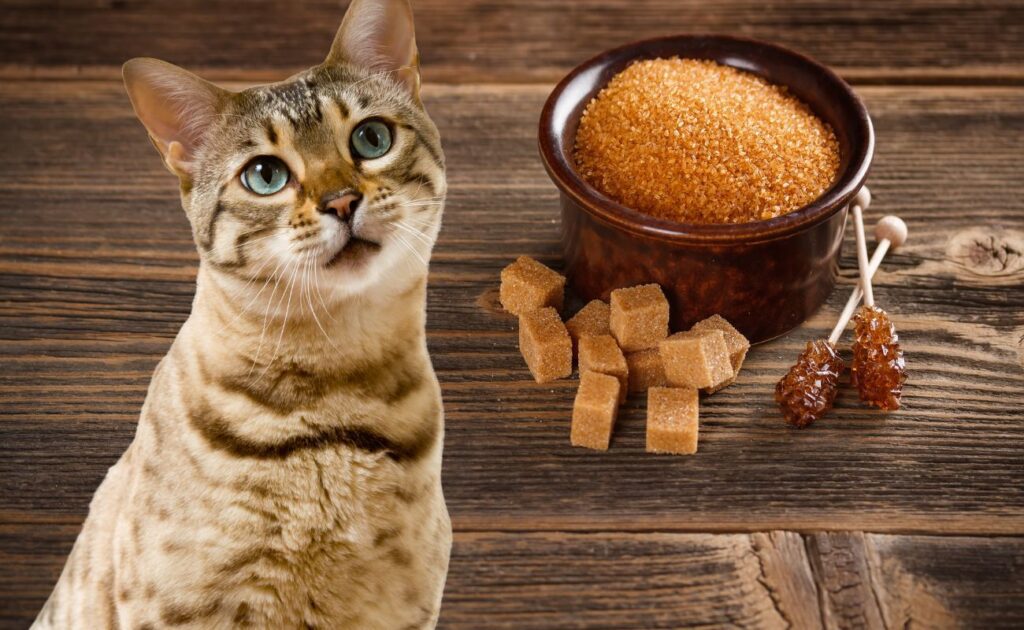
When it comes to the dietary needs of our feline friends, many pet owners find themselves questioning what is safe and healthy for their cats to consume. One such query that often arises is, “Can cats have brown sugar?” This article will delve into this topic, exploring the potential risks and effects of brown sugar on cats’ health. Understanding Brown Sugar Brown sugar is essentially white sugar with molasses added to it, giving it a distinctive color and flavor. While it is a common ingredient in human cuisine, adding sweetness to various dishes and desserts, it is important to understand its composition and how it might affect animals, particularly cats. Brown sugar contains sucrose, a type of sugar that can be problematic for cats in several ways. Cats and Their Dietary Needs Cats are obligate carnivores, meaning their diet primarily consists of meat. Their digestive systems are specifically adapted to process proteins and fats rather than carbohydrates. Unlike humans, cats do not require sugar in their diet. In fact, their bodies do not metabolize sugar efficiently, which can lead to various health issues if consumed in significant amounts. Nutritional Value: Certainly! Here’s a table showing the complete nutritional profile of brown sugar per 100 grams: Nutrient Amount per 100g Calories 380 kcal Total Fat 0 g Saturated Fat 0 g Trans Fat 0 g Cholesterol 0 mg Sodium 28 mg Total Carbohydrates 98.09 g Dietary Fiber 0 g Sugars 96.21 g Protein 0.12 g Vitamin A 0 IU Vitamin C 0 mg Calcium 83 mg Iron 0.71 mg Potassium 133 mg This table provides a detailed look at the nutritional content of brown sugar, highlighting its high carbohydrate and sugar content, and minimal presence of other nutrients. The Risks of Brown Sugar for Cats Feeding brown sugar to cats can pose several health risks. Here are some of the potential problems associated with brown sugar consumption in cats: Obesity: Cats that consume high amounts of sugar are at a greater risk of becoming overweight or obese. Obesity can lead to numerous health problems, including diabetes, arthritis, and heart disease. Diabetes: Just like humans, cats can develop diabetes. A diet high in sugar can disrupt their insulin regulation, leading to diabetes mellitus, which requires lifelong management. Dental Issues: Sugar can cause dental problems in cats, including tooth decay and gum disease. This can be painful and may require veterinary intervention. Digestive Problems: Cats may experience digestive issues such as diarrhea or an upset stomach if they consume too much sugar. Their digestive systems are not designed to handle high levels of carbohydrates. Why Brown Sugar Is Not Suitable for Cats Given the risks associated with sugar consumption, it is clear that brown sugar is not suitable for cats. Unlike humans, who can enjoy sweet treats in moderation, cats do not benefit from sugar in their diet. Instead, it can lead to a host of health problems that can affect their quality of life. Healthier Alternatives for Treating Cats If you want to give your cat a treat, there are many healthier alternatives to consider. Here are a few options: Catnip: Many cats enjoy catnip, which is a safe and natural treat that can stimulate their senses. Cooked Meat: Small pieces of cooked chicken or turkey can be a delicious and nutritious treat for your cat. Commercial Cat Treats: There are numerous cat treats available on the market that are specifically formulated to meet cats’ dietary needs. Summary: Can Cats Have Brown Sugar? So, can cats have brown sugar? The answer is no. Brown sugar, like other forms of sugar, poses several health risks to cats, including obesity, diabetes, dental issues, and digestive problems. As responsible pet owners, it is essential to prioritize the health and well-being of our feline companions by providing them with a diet that meets their nutritional needs. Opt for healthier treat options and avoid giving your cat brown sugar or other sugary foods. This will help ensure your cat remains healthy, happy, and free from unnecessary health complications. In summary, understanding the dietary needs of cats and the potential dangers of certain foods is crucial for their health. While it may be tempting to share human foods like brown sugar with your cat, it’s important to remember that their bodies are not equipped to handle such ingredients. By making informed choices about your cat’s diet, you can help them live a longer, healthier life.
Can Dogs Have Brown Sugar?
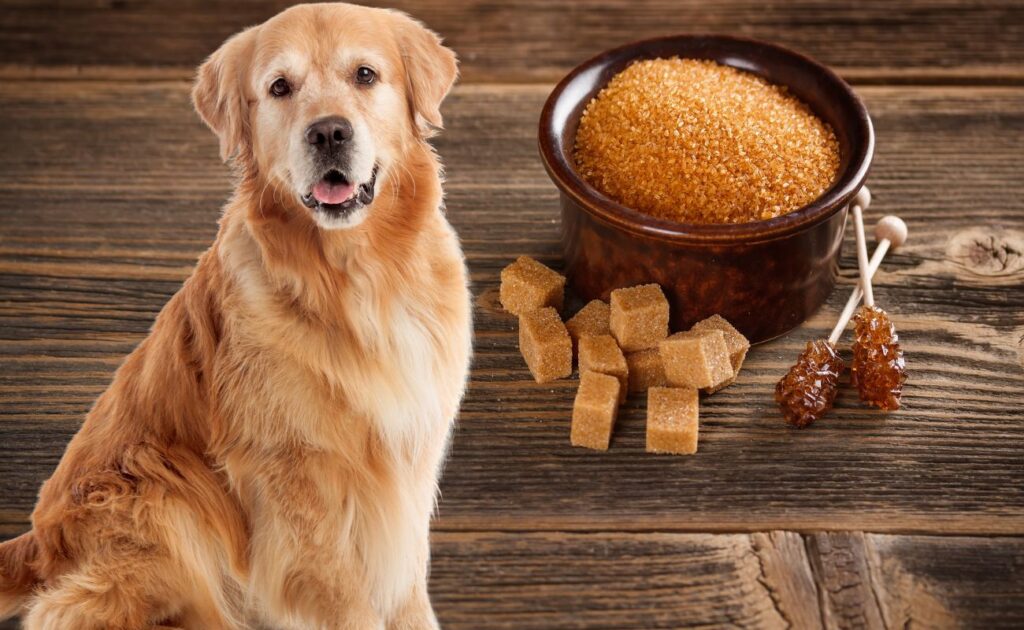
As dog owners, we often find ourselves questioning what human foods are safe for our furry friends. One such common question is: can dogs have brown sugar? While it’s natural to want to share our treats with our pets, understanding the impact of certain ingredients on their health is crucial. In this blog, we’ll explore whether brown sugar is safe for dogs, its potential effects, and healthier alternatives to satisfy your dog’s sweet tooth. What is Brown Sugar? Brown sugar is essentially white sugar mixed with molasses, giving it a distinctive color and flavor. It’s commonly used in baking and cooking for its rich, caramel-like taste. But when it comes to dogs, this sugary treat may not be as harmless as it seems. While sugar is a source of quick energy, it can lead to various health issues if consumed in large quantities by dogs. So, can dogs have brown sugar safely, or should it be avoided altogether? Nutritional Value: Certainly! Here’s a table showing the complete nutritional profile of brown sugar per 100 grams: Nutrient Amount per 100g Calories 380 kcal Total Fat 0 g Saturated Fat 0 g Trans Fat 0 g Cholesterol 0 mg Sodium 28 mg Total Carbohydrates 98.09 g Dietary Fiber 0 g Sugars 96.21 g Protein 0.12 g Vitamin A 0 IU Vitamin C 0 mg Calcium 83 mg Iron 0.71 mg Potassium 133 mg This table provides a detailed look at the nutritional content of brown sugar, highlighting its high carbohydrate and sugar content, and minimal presence of other nutrients. Effects of Brown Sugar on Dogs Feeding brown sugar to dogs can lead to several health problems. Firstly, dogs do not need sugar in their diet, as they derive their energy primarily from proteins and fats. Excessive sugar consumption can cause obesity, diabetes, and dental problems. Moreover, the sudden spike in blood sugar levels can make dogs hyperactive or, conversely, lethargic once the sugar rush subsides. This inconsistency in energy levels is not healthy for dogs. Therefore, when considering can dogs have brown sugar, it’s important to weigh these potential risks. Short-term Effects of Brown Sugar In the short term, consuming brown sugar can lead to immediate digestive issues in dogs. These may include vomiting, diarrhea, and abdominal discomfort. Dogs’ digestive systems are not designed to handle high sugar content, and sudden intake can disrupt their gut flora. This can lead to gastrointestinal distress and a very uncomfortable pet. Thus, even small amounts of brown sugar can cause significant discomfort and should be avoided. Long-term Effects of Brown Sugar Long-term consumption of brown sugar can have severe consequences for dogs. Regular intake can lead to chronic health issues such as obesity, which in turn can cause joint problems, heart disease, and decreased lifespan. Diabetes is another major concern, as it requires lifelong management and can drastically affect a dog’s quality of life. Additionally, persistent dental issues can result from sugar buildup, leading to pain and infections. So, while the answer to can dogs have brown sugar might seem harmless in small doses, the long-term implications are serious. Safe Sweet Treats for Dogs If you’re looking to treat your dog to something sweet, there are healthier alternatives to brown sugar. Fruits like blueberries, apples (without seeds), and bananas can be excellent choices. These natural treats provide vitamins and fiber without the harmful effects of processed sugar. You can also consider specially formulated dog treats that are low in sugar and high in nutrients. These alternatives ensure your dog enjoys a tasty snack without compromising their health. Homemade Dog Treat Recipes Making homemade dog treats is a great way to control what goes into your pet’s snacks. Simple recipes using ingredients like pumpkin, peanut butter (without xylitol), and oats can be both healthy and delicious for your dog. For example, a mix of mashed bananas, oat flour, and a touch of honey can make delightful cookies that your dog will love. This way, you avoid the pitfalls of wondering can dogs have brown sugar and provide a wholesome treat instead. Summary: Can Dogs Have Brown Sugar? So, can dogs have brown sugar? The answer is no, they shouldn’t. While it might be tempting to share your sweet treats with your furry friend, the potential health risks far outweigh the benefits. Instead, opt for dog-friendly alternatives that can satisfy their cravings without harming their health. By making informed choices, you ensure your dog stays healthy, happy, and full of energy. Always consult your veterinarian if you’re unsure about what foods are safe for your dog, and prioritize their well-being in every snack you offer.
Can Cats Eat Ritz Crackers?
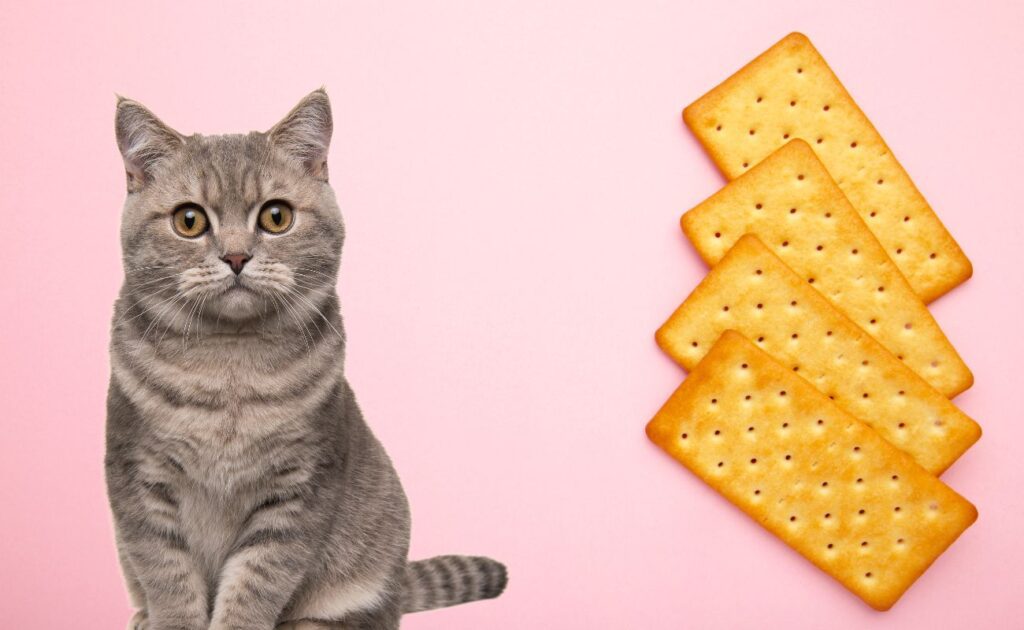
Cats are known for their curiosity and their penchant for sampling human food. As a pet owner, you might wonder about the safety of various snacks for your feline friend. One common snack that might catch your eye is Ritz crackers. In this blog post, we will explore whether Ritz crackers are safe for cats and what you should know before sharing this treat with your furry companion. Understanding Cat Nutrition, Can Cats Eat Ritz Crackers? Cats have specific dietary needs that are quite different from humans and even other pets like dogs. They are obligate carnivores, meaning their diet should primarily consist of meat. This is because cats require certain nutrients, such as taurine, that are found almost exclusively in animal tissues. A diet lacking in these essential nutrients can lead to serious health issues for your cat. Essential Nutrients for Cats Cats need a diet rich in proteins, fats, vitamins, and minerals. Proteins and fats provide the necessary energy and support various bodily functions. Vitamins like A, D, E, and B-complex, along with minerals such as calcium and phosphorus, are crucial for maintaining their health. Additionally, cats require taurine and arachidonic acid, which are only found in animal products. Nutrient Amount per Serving (5 crackers) Calories 80 kcal Total Fat 4.5 g Saturated Fat 1 g Trans Fat 0 g Cholesterol 0 mg Sodium 130 mg Total Carbohydrates 10 g Dietary Fiber 0 g Sugars 1 g Protein 1 g Vitamin A 0% DV Vitamin C 0% DV Calcium 0% DV Iron 2% DV The Role of Treats While treats can be a delightful addition to your cat’s diet, they should never replace the main nutritional components. Treats should be given in moderation and should ideally complement their primary diet. This brings us to the question: Can cats eat Ritz crackers? Ingredients in Ritz Crackers To determine whether Ritz crackers are safe for cats, it’s important to examine their ingredients. Ritz crackers are made from wheat flour, vegetable oil, sugar, salt, leavening agents, and sometimes cheese or other flavorings. Let’s break down these components to understand their impact on cats. Wheat Flour and Vegetable Oil Wheat flour is a carbohydrate source that doesn’t offer significant nutritional benefits to cats. Cats do not have a high requirement for carbohydrates, and excessive consumption can lead to weight gain and other health issues. Vegetable oil, while providing some fats, is not as beneficial as the animal-based fats cats need. Sugar and Salt Sugar is not necessary for cats and can contribute to obesity and dental problems. Similarly, high levels of salt can be harmful, leading to issues like hypertension and kidney disease. Cats have a much lower tolerance for salt compared to humans, making it important to monitor their intake. Additives and Flavorings Additional ingredients like cheese or flavorings may contain artificial additives and preservatives. These substances can cause digestive issues or allergic reactions in cats. Cheese, being a dairy product, might not be suitable for all cats, especially those that are lactose intolerant. Potential Risks of Feeding Ritz Crackers to Cats Given the ingredients in Ritz crackers, there are several potential risks associated with feeding them to your cat. While an occasional small piece might not cause immediate harm, regular consumption or larger quantities can lead to various health problems. Digestive Issues Cats have a sensitive digestive system, and foods high in carbohydrates, fats, and artificial additives can lead to gastrointestinal upset. Symptoms might include vomiting, diarrhea, and general discomfort. Obesity and Related Health Problems Feeding your cat high-calorie snacks like Ritz crackers can contribute to weight gain and obesity. Obesity in cats is associated with numerous health issues, including diabetes, joint problems, and decreased lifespan. Nutritional Imbalance Regularly feeding your cat non-nutritive snacks can result in a nutritional imbalance. Cats require a diet that provides all essential nutrients in the right proportions. Filling their diet with empty calories can lead to deficiencies and health complications. Safe Alternatives to Ritz Crackers If you want to treat your cat, it’s best to choose options that are specifically designed for their dietary needs. Here are some safe and healthy alternatives: Commercial Cat Treats Opt for commercially available cat treats that are formulated to meet the nutritional requirements of felines. These treats come in various flavors and textures that your cat will enjoy without compromising their health. Cooked Meat Small pieces of cooked chicken, turkey, or fish can make excellent treats. Ensure that the meat is plain, without any seasoning, garlic, or onions, which can be toxic to cats. Catnip Many cats enjoy catnip, and it can be a fun and safe treat. You can offer dried catnip or catnip-infused toys to provide your cat with a delightful experience. Summary: Can Cats Eat Ritz Crackers? In conclusion, while Ritz crackers are not toxic to cats, they are not suitable as a regular treat due to their high carbohydrate, sugar, and salt content. The occasional small piece might not harm your cat, but it’s best to avoid making it a habit. Instead, opt for treats that are specifically formulated for cats to ensure they receive the necessary nutrients without the risk of health issues. Remember, your cat’s health and well-being should always come first. If you’re ever in doubt about what foods are safe for your cat, consult with your veterinarian. They can provide personalized advice based on your cat’s specific dietary needs and health conditions.
Can Dogs Eat Ritz Crackers?
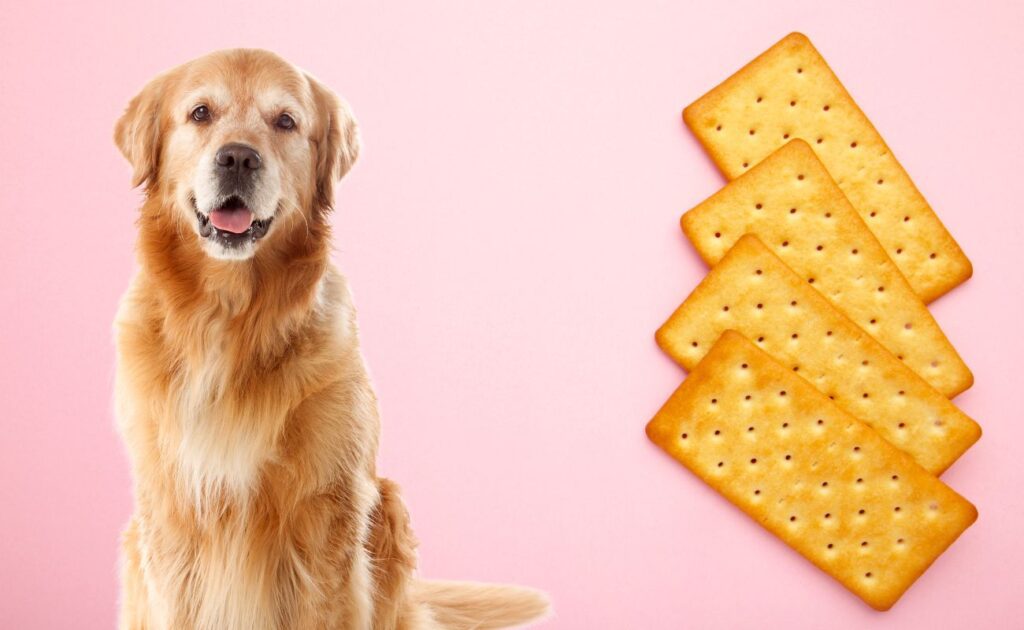
As a dog owner, you might often wonder about the safety of sharing your favorite snacks with your furry friend. One such popular snack is Ritz crackers. But, can dogs eat Ritz crackers? This blog aims to provide a thorough answer to this question, exploring the ingredients, potential benefits, and risks associated with feeding Ritz crackers to dogs. By the end of this article, you’ll have a clear understanding of whether or not this snack is safe for your pet. Ingredients in Ritz Crackers To determine if Ritz crackers are safe for dogs, it’s essential to look at the ingredients. Ritz crackers typically contain flour, vegetable oil, sugar, salt, high fructose corn syrup, leavening agents, soy lecithin, and natural flavors. While these ingredients are generally safe for human consumption, they might not be suitable for dogs. High levels of salt and sugar can pose health risks to dogs, leading to issues such as obesity, diabetes, and heart disease. Additionally, some dogs may have allergic reactions to certain ingredients like soy lecithin or gluten present in flour. Are Ritz Crackers Nutritionally Beneficial for Dogs? Ritz crackers do not offer significant nutritional benefits for dogs. They are primarily composed of carbohydrates, fats, and a small amount of protein, none of which are necessary for a dog’s diet in the form of processed snacks. Dogs require a balanced diet rich in high-quality proteins, healthy fats, vitamins, and minerals. While a small amount of Ritz crackers may not cause immediate harm, they do not contribute to a dog’s nutritional needs. Therefore, it is better to provide snacks specifically designed for dogs, which are formulated to support their health and well-being. Nutrient Amount per Serving (5 crackers) Calories 80 kcal Total Fat 4.5 g Saturated Fat 1 g Trans Fat 0 g Cholesterol 0 mg Sodium 130 mg Total Carbohydrates 10 g Dietary Fiber 0 g Sugars 1 g Protein 1 g Vitamin A 0% DV Vitamin C 0% DV Calcium 0% DV Iron 2% DV Potential Health Risks Feeding Ritz crackers to dogs can pose several health risks. The high salt content can lead to sodium ion poisoning, especially if consumed in large quantities. Symptoms of sodium ion poisoning include vomiting, diarrhea, tremors, elevated body temperature, and seizures. The sugar content in Ritz crackers can also contribute to weight gain and dental problems in dogs. Furthermore, some dogs might experience digestive issues such as diarrhea or an upset stomach after eating foods that are high in fats and oils. Long-term consumption of unhealthy snacks can lead to chronic health issues, reducing the quality of life for your pet. How Much is Too Much? If you decide to give your dog Ritz crackers, it’s crucial to do so in moderation. One or two crackers occasionally are unlikely to cause harm, but they should not become a regular part of your dog’s diet. Always observe your dog for any signs of adverse reactions after consuming Ritz crackers. If your dog shows any signs of discomfort or illness, it’s best to avoid giving them this snack altogether. Instead, consider healthier alternatives that are specifically designed for dogs and meet their dietary requirements. Healthier Alternatives Instead of feeding your dog Ritz crackers, consider offering healthier alternatives that provide nutritional benefits. Some safe and healthy snacks for dogs include: Carrots: Low in calories and high in fiber and vitamins. Apple slices: A great source of vitamins A and C, as well as fiber (avoid seeds). Blueberries: Packed with antioxidants and vitamins. Pumpkin: Good for digestion and rich in vitamins and minerals. Commercial dog treats: Specifically formulated to meet the nutritional needs of dogs. These alternatives not only offer nutritional benefits but also avoid the potential health risks associated with processed human snacks. Summary Can Dogs Eat Ritz Crackers? In summary, while dogs can eat Ritz crackers in very small quantities, it is not recommended due to the potential health risks. The high salt and sugar content, along with the lack of nutritional benefits, make Ritz crackers an unsuitable choice for your dog’s diet. Instead, opt for healthier, dog-friendly snacks that contribute positively to their overall health. Always consult with your veterinarian if you have any concerns about your dog’s diet and the safety of specific foods. By making informed choices, you can ensure your furry friend remains happy, healthy, and safe.
Can Cats Have Honey Nut Cheerios?
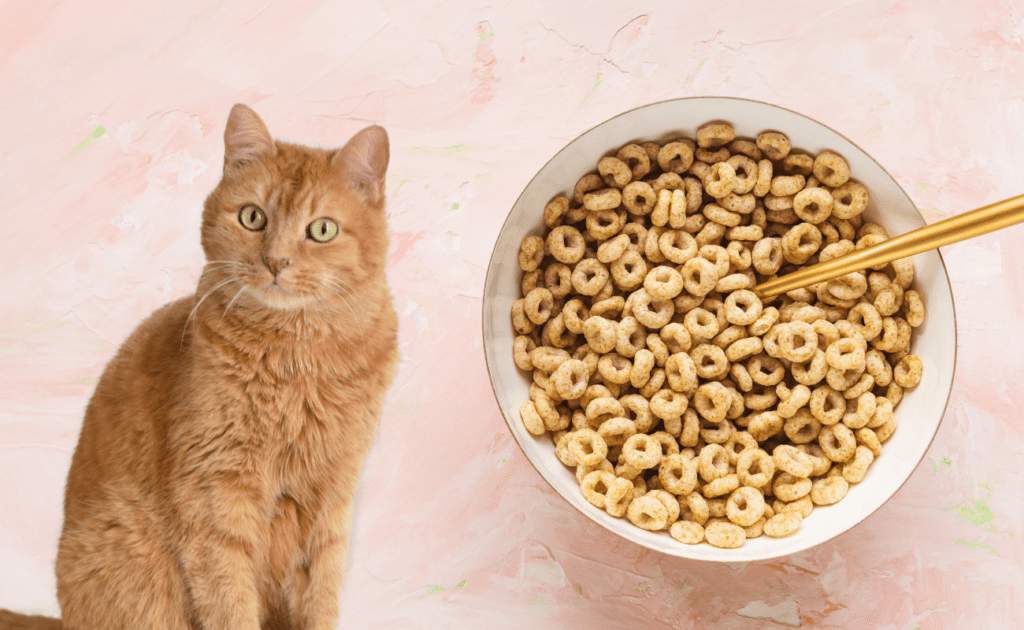
Cats are known for their curious nature and love for exploring their surroundings, including the food their owners consume. A common question among cat owners is whether their feline friends can safely eat human foods like Honey Nut Cheerios. This blog post delves into the suitability of Honey Nut Cheerios for cats, discussing potential benefits and risks, and providing some alternative treats for your beloved pet. Understanding a Cat’s Dietary Needs Cats are obligate carnivores, meaning their diet should primarily consist of meat. Unlike humans and some other animals, cats have specific nutritional requirements that are met through a diet rich in animal proteins and fats. Their digestive systems are not designed to process large amounts of carbohydrates, and their bodies do not produce the necessary enzymes to break down certain plant-based foods efficiently. Therefore, it is essential to be cautious when offering any human food to cats, including cereals like Honey Nut Cheerios. What Are Honey Nut Cheerios? Honey Nut Cheerios are a popular breakfast cereal made from whole grain oats, sugar, honey, almond flavor, and various vitamins and minerals. While they are a convenient and tasty breakfast option for humans, it’s crucial to understand how these ingredients might affect cats. The primary ingredients of concern in Honey Nut Cheerios are sugar and honey, which are not necessary or particularly beneficial for a cat’s diet. Can Cats Eat Honey Nut Cheerios? Technically, cats can eat small amounts of Honey Nut Cheerios without immediate harm, but it is not recommended as a regular part of their diet. The high sugar content can lead to several health issues, including obesity, diabetes, and dental problems. Moreover, Honey Nut Cheerios do not provide any essential nutrients that cats require for their well-being. While a few pieces might not cause significant harm, there are better treat options that align more closely with a cat’s dietary needs. Potential Risks of Feeding Honey Nut Cheerios to Cats Feeding Honey Nut Cheerios to cats can pose several risks: High Sugar Content: Cats do not need sugar in their diet. Excessive sugar consumption can lead to obesity and diabetes. Digestive Issues: Cats lack the necessary enzymes to digest high amounts of carbohydrates, which can lead to gastrointestinal upset. Dental Problems: Sugar contributes to the formation of plaque and tartar, leading to dental issues over time. Lack of Nutritional Value: Honey Nut Cheerios do not provide the essential nutrients cats need, making them an empty calorie source. Given these risks, it’s clear that Honey Nut Cheerios are not an ideal treat for cats. Nutritional Content Here’s a table detailing the nutritional profile of Honey Nut Cheerios per 1 cup (37 grams): Nutrient Amount per 1 Cup (37g) Calories 146 Total Fat 2.2g Saturated Fat 0.3g Trans Fat 0g Cholesterol 0mg Sodium 210mg Total Carbohydrates 30g Dietary Fiber 2.7g Sugars 12g Protein 2.6g Vitamin D 2mcg (10% DV) Calcium 130mg (10% DV) Iron 4.5mg (25% DV) Potassium 180mg (4% DV) Vitamin A 10% DV Vitamin C 10% DV Vitamin B6 25% DV Vitamin B12 25% DV Folate (Folic Acid) 50% DV Zinc 10% DV *DV = Daily Value, based on a 2,000 calorie diet. Safe Treat Alternatives for Cats If you want to treat your cat, consider these healthier alternatives: Commercial Cat Treats: These are formulated to meet cats’ nutritional needs and come in various flavors and textures. Cooked Meat: Small pieces of cooked chicken, turkey, or fish are excellent high-protein treats. Catnip: Many cats enjoy catnip, which can be a fun and stimulating treat. Specialty Cat Foods: There are many specialty treats available that cater to different dietary requirements, including grain-free options How to Introduce New Foods to Your Cat When introducing any new food or treat to your cat, do so gradually to monitor for any adverse reactions. Start with a small amount and observe your cat for any signs of digestive upset or allergic reactions. Always consult with your veterinarian before adding new items to your cat’s diet, especially if your cat has any pre-existing health conditions. Summary: Should You Give Your Cat Honey Nut Cheerios? Can Cats Have Honey Nut Cheerios? In conclusion, while Honey Nut Cheerios are not toxic to cats, they are not a suitable or healthy treat for them. The high sugar content, lack of nutritional value, and potential health risks make them an inappropriate choice for your feline friend. Instead, opt for treats specifically designed for cats that provide the necessary nutrients without the added risks. Always prioritize your cat’s health by providing a balanced and appropriate diet, and consult your veterinarian for advice on the best treats for your pet. By understanding the dietary needs of cats and the potential risks associated with human foods like Honey Nut Cheerios, you can make informed decisions that contribute to the overall health and well-being of your furry companion.

